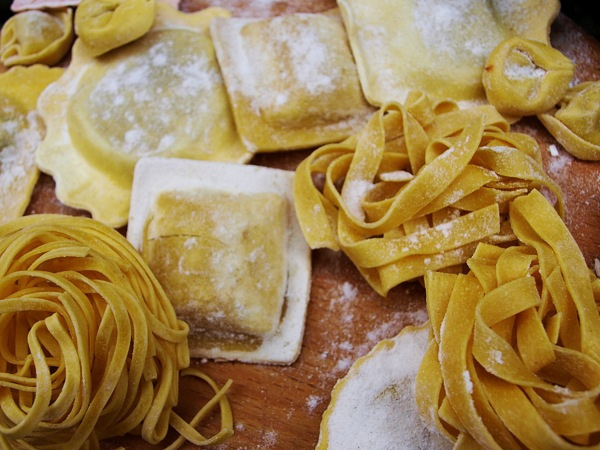
Provoking an Italian is not difficult.
All it takes is the wrong word about the right soccer team or a leftish opinion about a rightish party. Equally efficient would be an indecent mention about their mother.
All of the above, however, would probably get on anybody’s nerves, regardless of their cultural background.
Having been with an Italian man for the past seven years and knowing many of his friends, their habits, traditions, sensitivities and other peculiarities, I can conclude that there is one guaranteed way to insult an Italian to the core.
We are, of course talking about Italian food, pasta to be precise.
Although pasta is possibly about half of the world’s population’s favorite food, 90 percent of those people are probably eating it the wrong way.
Naturally, adapting recipes to individual or cultural taste is always a tricky business where traditional dishes are concerned, but Italians are particularly sensitive about it.
Please take the following five tips to heart, so that the next time you share a meal with Italians, you escape being banished from their dinner table for the rest of your life.
1) The Greatest Sin
Never, ever, ever, I repeat, never, ever, ever pour tomato ketchup over your pasta. Tomato ketchup is the most evil and hated ingredient in the Italian kitchen.
Proper tomato sauce is cooked with onions, fresh tomatoes, salt and if necessary, a pinch of sugar. Proper tomato sauce is not made of tomato concentrate, distilled vinegar, high fructose corn syrup, corn syrup, salt, spice, onion powder and natural flavoring—which would be the recipe for tomato ketchup.
So, I emphasize, do not spoil a beautiful plate of pasta by squeezing this read, toxic, liquid sugar over it.
2) Say cheese!
But not all the time. Sprinkling grated parmesan, grana padano or pecorino cheese on pasta is totally acceptable, except…when there is seafood or mushrooms involved. It’s very simple.
That waiter that is asking whether you want parmesan cheese on top of the tagliatelle ai porcini or the spaghettini con frutti di mare? Well, he needs some basic Italian cuisine education.
On a side note, pasta marinara should not contain any seafood. The traditional marinara sauce consists of tomatoes, oregano, parsley and garlic, just for the record.
3) Keep it dry.
The Italian traditional name for the dish that the rest of the world calls pasta, is actually pastasciutta, which translates to dry pasta. It refers to any kind of pasta dish that is not soup based. It is also an apt description for the way the pasta should be served: with a moderate amount of sauce. The sauce, whether a thick slow-cooked bolognese or a quick aglio oglio, is meant to flavor the pasta, not to drown it. We are supposed to see and taste the pasta, it is not just the carrier for the meat nor vegetables.
So don’t go asking for more sauce. Eat it “dry.”
4) Stick to the pasta.
For inexplicable reasons, some ignorants among us have this weird habit of adding their side dish, such as the salad, to their plate of pasta. Imagine this gorgeous serving of spaghetti alla carbonara, with its perfectly balanced mix of egg yoke, cheese, bacon and black pepper (no cream, never add cream to your carbonara!) and then plonking a scoop of salad dripping in olive oil and balsamic vinegar all over it. Sacrilege. There are no other words for it.
As a general rule, except for the cheese as mentioned before, do not add anything to your plate of pasta. No ketchup (that one is worth repeating), no Italian herb mix, no butter, no tabasco, no nothing.
5) Be ready to dig in, fast.
Cooking the pasta is a delicate business. It must be al dente, warm and fresh when served. Re-heating the pasta is a big no-no. Once the pasta has been put in the boiling water, a strict timing has to be respected. It has to be drained just before it’s perfect, as the pasta will continue to cook a little bit in its own heat.
Unlike some people who put the pasta in the plate and then scoop the sauce on top of it, tradition dictates that the cooked pasta be mixed with the sauce in the pot or the pan. As soon as it is all properly stirred, it will be served onto the plates, to be eaten immediately, piping hot.
There is a reason why Italians eat fast.
Bonus Rule
For the total pasta beginners among us, remember this: Do not, I repeat, do not ever cut the pasta with a knife. Spaghetti, linguine, tagliatelle, bucatini and the like should be rolled on the fork (a little help from a spoon is allowed if really necessary). Penne, rigatoni, pipe, farfalle and other bite-sized pasta are to be eaten with a fork. If you really want to use a knife, use it on the lasagna. Actually, a properly cooked lasagna can be cut with a fork, but if table etiquette requires two pieces of cutlery, than subtle use of the knife is acceptable!
Having said all that, there is only one thing left to say: buon appetito!
~
Relephant:
Italy the Healthy Way.
~
Author: Yaisa Nio
Editor: Alli Sarazen
Photo: Chris RubberDragon/Flickr


 Share on bsky
Share on bsky




Read 4 comments and reply